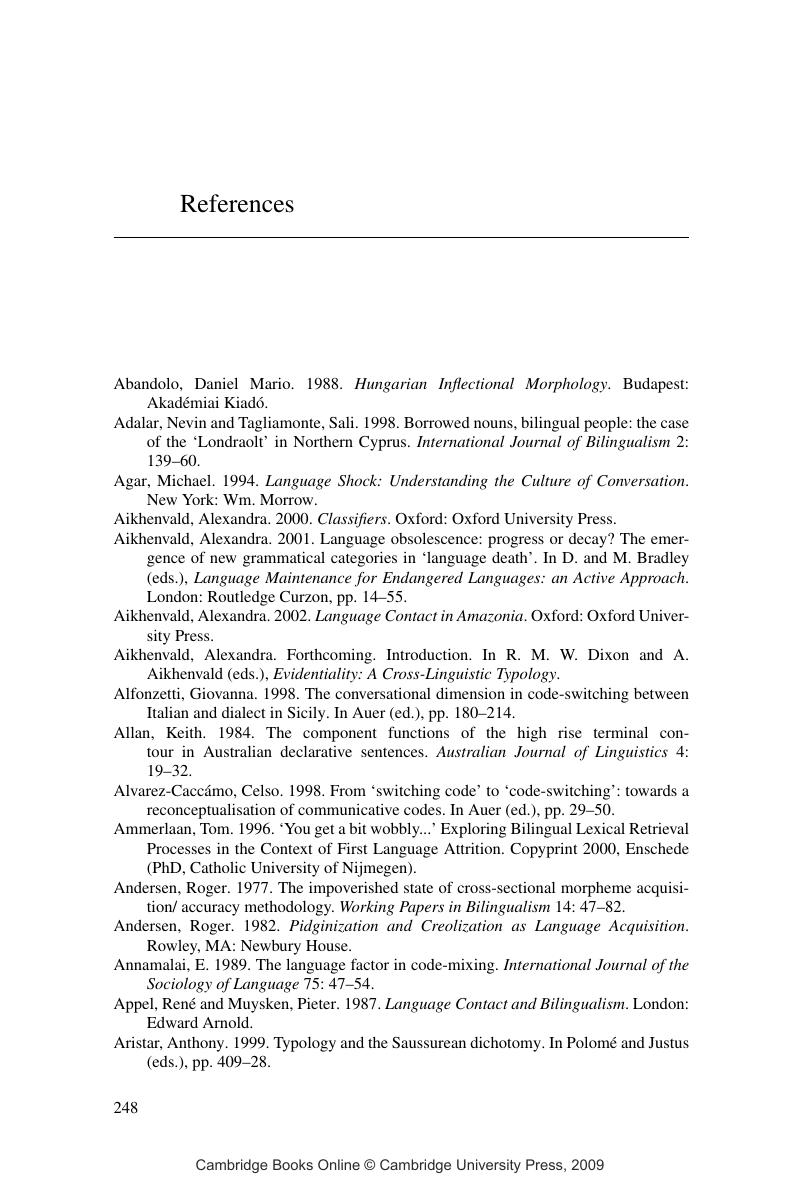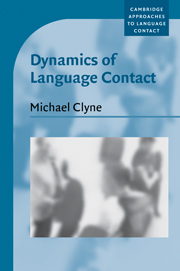Book contents
- Frontmatter
- Contents
- List of map and figures
- List of tables
- Series editor's foreword
- Acknowledgments
- List of abbreviations
- 1 Introduction
- 2 Dynamics of language shift
- 3 On models and terms
- 4 Dynamics of convergence and transference
- 5 Dynamics of transversion
- 6 Dynamics of plurilingual processing
- 7 Dynamics of cultural values in contact discourse
- 8 Towards a synthesis
- Notes
- References
- Index of authors
- Index of languages
- Index of subjects
- References
References
Published online by Cambridge University Press: 18 December 2009
- Frontmatter
- Contents
- List of map and figures
- List of tables
- Series editor's foreword
- Acknowledgments
- List of abbreviations
- 1 Introduction
- 2 Dynamics of language shift
- 3 On models and terms
- 4 Dynamics of convergence and transference
- 5 Dynamics of transversion
- 6 Dynamics of plurilingual processing
- 7 Dynamics of cultural values in contact discourse
- 8 Towards a synthesis
- Notes
- References
- Index of authors
- Index of languages
- Index of subjects
- References
Summary

- Type
- Chapter
- Information
- Dynamics of Language ContactEnglish and Immigrant Languages, pp. 248 - 272Publisher: Cambridge University PressPrint publication year: 2003



